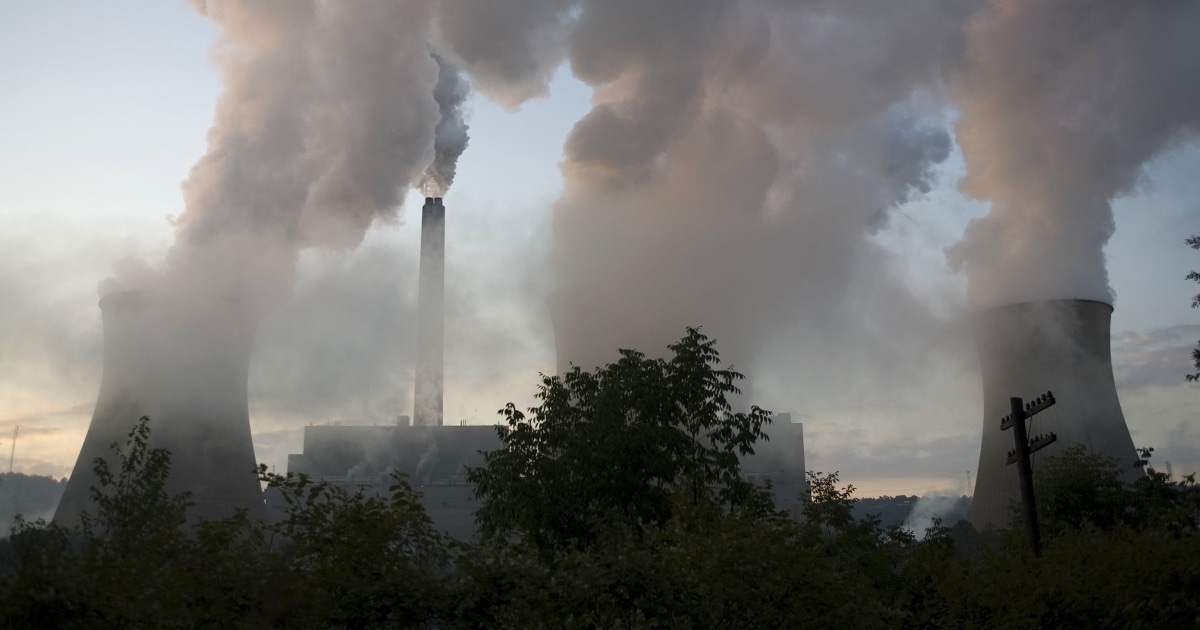
By Denise Chow
In the latest bit of bad news for a planet beset by climate change, the concentration of carbon dioxide in Earth’s atmosphere has climbed to a level last seen more than 3 million years ago — before humans even appeared on the rocky ball we call home.
On Saturday, sensors at the Mauna Loa Observatory in Hawaii indicated that concentrations of the greenhouse gas — a byproduct of the burning of fossil fuels — had reached 415 parts per million (ppm), meaning that for every 1 million molecules of gas in the atmosphere, 415 were of carbon dioxide.
Carbon dioxide traps heat from the sun, and higher levels are associated with higher global temperatures and other effects of climate change, such as rising seas and unusual weather patterns.
The level of CO2 in the atmosphere has risen an average of 2.5 ppm per year over the past decade, reaching 400 ppm in 2013 — and the level appears likely to go higher from here.
“We’re racing toward a state very different from the kind humans evolved in and that civilization developed in,” said Ralph Keeling, a geochemist at the Scripps Institution of Oceanography in La Jolla, California.
The last time levels of atmospheric carbon dioxide were this high came during the Pliocene Epoch, which extended from about 5.3 million to 2.6 million years ago. During that period, average sea levels were about 50 feet higher than they are today and forests grew as far north as the Arctic, said Rob Jackson, a professor of earth system science at Stanford University. “Earth was a very different place,” he said. “You would hardly recognize the land surface, and my gosh, we don’t want to go there.”
But there is evidence to suggest the planet is headed in that direction. If the current trajectory continues, levels of CO2 could hit 500 ppm within 30 years, a number that could mean an increase in global temperatures of at least 2 degrees Celsius (about 3.6 degrees Fahrenheit).
“At the present pace, we could reach that well within a lot of people’s lifetimes,” Keeling said of the grim milestone ahead.
Levels of carbon dioxide in the atmosphere are commonly represented on a graph known as the Keeling Curve, named for Keeling’s father, Charles David Keeling, who began taking daily measurements of atmospheric carbon dioxide in 1958 from atop the Mauna Loa Observatory in Hawaii. The curve shows a steep climb, owing to human-caused climate change.
As the planet inches toward 500 ppm, scientists are sounding the alarm over the potential for catastrophic changes to our environment. “None of these specific numbers are really thresholds in the sense that anything particular happens when we cross them,” Gavin Schmidt, a climatologist who directs NASA’s Goddard Institute for Space Studies in New York City, told NBC News MACH in an email. “But as we go through them, we are putting our foot on the accelerator of climate change, and impacts and damage will continue to rise.”
But it’s hard to say exactly what these changes will bring, or when. Some things, like the loss of vegetation and sea-ice coverage, will grow increasingly visible in the short term. Other things, like the melting of ice sheets in Antarctica and Greenland, occur more slowly. “But these impacts are going to persist for a very long time,” said Dana Royer, a professor of earth and environmental sciences at Wesleyan University in Middletown, Connecticut. “Once that happens, we can’t really reverse it.”
Even if moving to renewable energy and other measures help stanch the steady flow of carbon dioxide into the atmosphere, our descendants will likely be saddled with the negative consequences of our artificially elevated levels of CO2.
“We’re not going to see the full consequences of 415 parts per million of carbon dioxide today,” Jackson said. “It’ll take a thousand years of people — 30 generations of people — to pay the price of what we’re doing today.”
Want more stories about the environment?
SIGN UP FOR THE MACH NEWSLETTER AND FOLLOW NBC NEWS MACH ON TWITTER, FACEBOOK, AND INSTAGRAM.
https://www.nbcnews.com/mach/science/carbon-dioxide-hits-level-not-seen-3-million-years-here-ncna1005231Bagikan Berita Ini















0 Response to "Carbon dioxide hits a level not seen for 3 million years. Here's what that means for climate change — and humanity. - NBC News"
Post a Comment